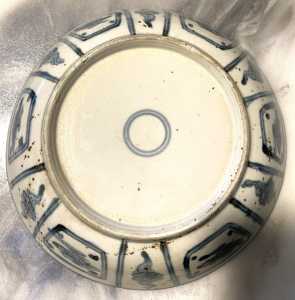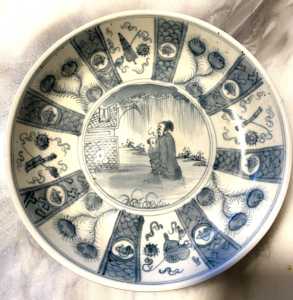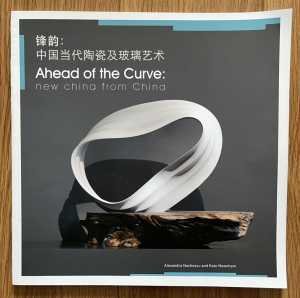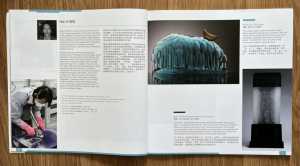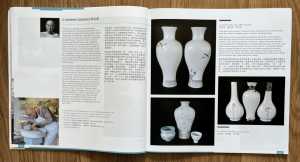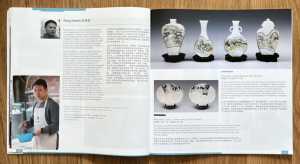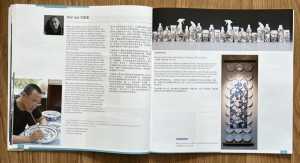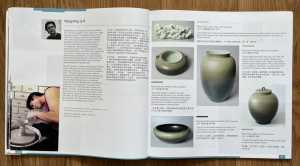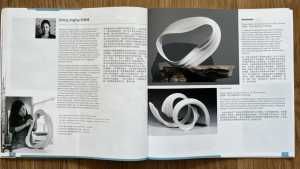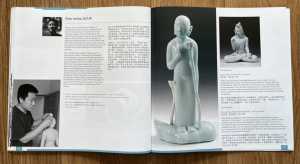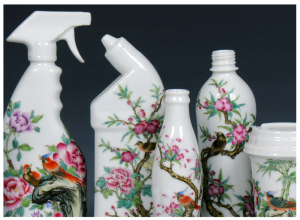The Chinese and Asian Art Forum. For Fans, Collectors and Dealers.
 Basic Rules For the BidAmount Asian Art Forum: Talk about whatever you want. You can even discuss and offer things that are for sale if they are authentic. Maximum image file size per post is 2 MB. Images of 700pxl x 700pxl are optimal if saved at a medium resolution. Be respectful of others and enjoy yourself. Click the YouTube link for a brief tutorial on using the forum. You can also EMBED Videos by cutting and pasting from You-Tube, Vimeo etc.
Basic Rules For the BidAmount Asian Art Forum: Talk about whatever you want. You can even discuss and offer things that are for sale if they are authentic. Maximum image file size per post is 2 MB. Images of 700pxl x 700pxl are optimal if saved at a medium resolution. Be respectful of others and enjoy yourself. Click the YouTube link for a brief tutorial on using the forum. You can also EMBED Videos by cutting and pasting from You-Tube, Vimeo etc.
NOTE: To post an item or add a new post, click open the category title from the FORUM LIST, and CLICK the Blue ADD TOPIC button.
@lotusblack Brian, there are a number of good reasons why fakes are not perfect copies.
First, reproductions that date prior to the 21st century often are flawed for two reasons: 1) lack of widespread knowledge of the technical aspects of the decoration/physical composition of period pieces, and 2) there was generally a lack of financial incentive to produce higher quality pieces.
From 2000 onward, China's economy really started to boom, and the spread of interest among wealthy business owners in China to build porcelain collections grew at an expodential rate. Awareness that Chinese porcelains of value in the Western market motivated thousands to buy anything that came into the auction market - a feeding frenzy without sufficient knowledge of authentication took place.
So, while many fine pieces made it back to China from 2000-2014, a lot of average to low quality genuine pieces, and late 20th c. copies, made their way back to China due to the absence of sufficient knowledge.
Meantime, Chinese porcelain makers saw an opportunity to capitalize on the frenzy, and began making better quality fakes, then injecting them into the Western market. Given today's technology, and the depth of knowledge on traditional design and techniques, there is no reason why a perfect fake can not be made, but there are economic consequences to some fairly important people in China if perfect fakes enter the market place in large quantity.
Many business people who bought heavily during the frenzy lost their shirts, having spent millinos on fakes. A natural retraction of the market took place and continues today. However, the high quality fakes (those that are extremely convincing in photos) had already entered the market, dealing another painful blow to collectors looking to re-patriate porcelains back to China.
The whole sitation has created a serious problem for Chinese collectors who were struggling to distinguish fakes from genuine.
So, my theory is that there is some form of unwritten agreement (collusion) between the makers of forgeries and collectors in China, that a sbutle 'tell' will be built into the object, and that 'tell' will be communicated to those collectors at the highest tier.
I suspect these 'tells', what you describe as a flaw, get leaked to the general public over time.
Sounds like an sinister and elaborate scheme that just couldn't be true? Just how many hundreds of millions of dollars of Chinese antiques are sold each year? There is more than sufficient financial motive for this kind of market manipulation.
I have always felt that contemporary Chinese potters have missed out on creating a contemporary, international ceramics scene. My suspicion is that a lot of talent is tied up with high end fakery. I don’t collect Japanese or Korean ceramics, but even I know there are artisans producing some wonderful contemporary ceramics that have even found their way into museum collections.
Does anyone know of or have seen any impressive contemporary work by Chinese potters? I would love to see some pictures.
.
@william A very interesting point, I think the world is missing out on some great work that could be created. Bernard Leach created pottery that was indebted to song models (among many others). I recently purchased a modest Korean jar that was a brother to one in Leach's collection with the intent of studying it to gain inspiration (not to copy it but to use it as a starting point for new work). The returns for the potters who would make their own works would be less, and the middle men would make much much less (and for this reason I do not think we will be being a lot of late PRC dynasty work). But it would be a better life for the potters, and a better product for the collectors. Be well.
Hi William -
Attached images from an exhibition held November 2014 to May 2015 in the UK on some present contemporary ceramists based in Jingdezhen. Biographies and images of 7 of the 20 artists included …
Stuart
@william Bill, if you haven't already seen the video I recently posted a link to in the video section below about modern ceramics you might find it interesting to watch. John
@ming1449 A great article I found on this show:
https://www.theglassmagazine.com/ahead-of-the-curve-new-china-from-china-at-bristol-museum-art/
Really amazing stuff! I particularly like this one:
@jg1133 The artist that did the cleaning products in porcelain also made some B&W versions as well which was an absolutely creative take. They go for thousands now. Look at THIS PIECE at Sotheby's monochrome auction coming up, I watched the video Sotheby's put out about this auction and the woman described the painstaking detail the artist took to make the sheets look like paper and making them so thin layering them one by one and then glazing the entire piece. I agree with everyone, Chinese really need to step up on the modern ceramics scene.
I realize this probably seems idiotic to seasoned collectors, but I really struggle sometimes detecting what’s transferware and what isn’t, especially with some Japanese vases that are late 19/ early 20th century. First of all, I didn’t even realize that transferware was possible on vases, and the very thought of it just repulses me. I have zero interest in buying something that is mass produced or made by transferware. Can anyone shed some insight here? I feel kind of embarrassed for asking, to be honest.
Not idiotic at all Charlotte, it can be difficult at times, especially if you only have photos.
The best thing to do is look at lots as they will have features in common that you can train your eye to recognise immediately. Such as the tone of the blue, a slight fuzziness and lack of personality, if that makes sense.
Then there are technical issues, such as broken patterns, missing lines, mismatched ares where you can see "joins" and areas where it has either overlapped the edge in places or not reached the edge. I have lasted 2 below that show these things. For example, if you look at the plate, you can see a gap between the pattern and the rim on one part, which suggests it was not perfectly positioned; on the vase the pattern colour looks like it has bled into the white areas.
https://www.lelandlittle.com/items/277941/a-japanese-imari-vase-and-transferware-porcelain-plate/
https://www.etsy.com/listing/893428601/rare-antique-japanese-transferware
@julia Thank you SO much Julia, you are most kind and thoughtful to reply. Your explanation helps me a lot! I’m a bit confused by the Imari vase. Is that ALSO transferware? If so, wow, to me it looks shockingly hand-painted, and I could easily have fallen for it because I find it to be very attractive
You are very welcome and yes, it is transferware, but still a very nice piece. If you have a good look at it, you will see unfinished areas and fuzzy lines; it also has that kind of grainy look to the blue, which is quite a give away - and no brushstrokes.
If you keep looking for more online and enlarge the pictures for a good look, you will soon find that you start to recognise transferware more easily.
Thanks for visiting "The BidAmount Asian Art Forum | Chinese Art"
If you sell on eBay, or have a shop feel free to post images and descriptions and links.
Check back often for discussion about the latest news in the Chinese art and antique world. Also find out about the latest Asian art auctions at Sotheby's, Christie's, Bonhams and Tajans.
Auction results for: fine porcelain, ceramics, bronze, jade, textiles and scholar's objects. As well as Japanese, Thai, Vietnamese and other Asian cultures.
Thank you,
Peter Combs
Topics and categories on The BidAmount Asian Art Forum | Chinese Art
Kangxi vases, Kangxi dishes and chargers, Kangxi ritual pieces, Kangxi scholar's objects, Qianlong famille rose, Qianlong enamels, Qianlong period paintings, Qianlong Emporer's court, Fine porcelain of the Yongzheng period. Chinese imperial art, Ming porcelain including Jiajing, Wanli, Xuande, Chenghua as well as Ming jades and bronzes.
The BidAmount Asian Art Forum | Chinese Art
A free Asian art discussion board and Asian art message board for dealers and collectors of art and antiques from China, Japan, Korea, Thailand, Cambodia, Vietnam and the rest of Asia. Linked to all of the BidAmount Asian art reference areas, with videos from plcombs Asian Art and Bidamount on YouTube. Sign up also for the weekly BidAmount newsletter and catalogs of active eBay listing of Chinese porcelain, bronze, jades, robes, and paintings.
The art of calligraphy - and for the ancient Chinese it certainly was an art - aimed to demonstrate superior control and skill using brush and ink. Calligraphy established itself as one of the major Chinese art forms during the Han dynasty (206 BCE - 220 CE), and for two millennia after, all educated men were expected to be proficient at it.
The Museum’s collections of Asian art span nearly five millennia and encompass the cultures of China, the Himalayas, India, Japan, Korea, and Southeast Asia. In 2007, the Museum launched an initiative to create dedicated galleries for the collection, beginning with a gallery for the arts of Korea ...
Chinese art is full of symbolism, in that artists typically seek to depict some aspect of a totality of which they are intuitively aware.
China Online Museum is the finest online museum of Chinese art. It features Chinese calligraphy, painting, ceramics, bronzes, carving, and other artworks.
Chinese Ceramics & Works of Art. Overview Upcoming auctions Contacts Auction results ... Christie’s sales of Chinese ceramics and works of art showcase centuries of Chinese history. Held throughout the year in London, New York, Paris and Hong Kong, they attract a wide audience of collectors and connoisseurs vying for pieces as diverse as ...
Explore Asian Art Week. Contact the Specialist Department. Chinese Paintings ... Senior Specialist, Head of Sale. [email protected]. Tel:+1 212 641 5760. Bid in-person or online for the upcoming auction:Fine Chinese Paintings on 10 September 2019 at New York. Bid in-person or online for the upcoming auction:Fine Chinese Paintings on 10 ...
Discover an abundance of must-see art from all corners of a vast continent at Christie’s NY Asian Art Week. From contemporary classical and Chinese paintings to works with exemplary provenance from the Art Institute of Chicago, our Rockefeller Paza galleries will be full of ancient treasures and contemporary masterworks in a salute to the vibrant arts of Asia.
Sold to benefit The Art Institute of Chicago’s Asian Art Acquisition Fund, the sale features 84 lots with a focus on Ming and Qing porcelains, and offers a rare insight into the taste for collecting Chinese ceramics and works of art in the Midwest from the end of the 19th century through the 1980s. Highlights include two Wanli wucai garlic-head vases, a Qianlong mark and period, blue and ...
Specialist, Chinese Paintings, Christie's London Dr Malcolm McNeill is a Specialist in Chinese Paintings at Christie’s, based in London. He previously worked as an assistant curator of the Chinese collections and the Victoria and Albert Museum in London, as a researcher at the British Museum, and as a translator and tour guide at the National Palace Museum in Taipei.
The Christie's Education 2020 Conference: The Chinese Art Market 18 Jun 2019 Christie’s Education is delighted to announce our first international academic conference in Asia which will take place in Hong Kong from 26-27 November 2020 at the Hong Kong Convention and Exhibition Centre and will run in parallel with Christie’s Hong Kong Autumn Auctions.
The summer Chinese Art sale in Hong Kong will feature works of art from several private collections, including Qing porcelains and textile from the collection of the legendary Chinese art dealer A. W. Bahr (1877–1959), fine gilt bronze Buddhist sculptures from an old Hong Kong collection, an East Asian collection of Qing dynasty wine cups and jades, and a Japanese collection of Song ceramics ...
Sotheby's Chinese Works of Art Department holds two auctions each year in London, New York, Hong Kong and Paris.
Chinese Art - View Auction details, bid, buy and collect the various artworks at Sothebys Art Auction House.
With more than 340 Chinese works of art dating from the Neolithic to the Republic periods, highlights of this sale include a selection of Qing Imperial monochromes from the collection of Arnold and Blema Steinberg, early ceramics from the Art Institute of Chicago and Chinese porcelain and works of art from the collection of Henry Arnhold.
Results: Sotheby's Asia Week achieved $52.4 million in six strong auctions, exceeding pre-sale estimates. With 76.5% of lots sold and 60.3% of lots surpassing high estimates, the Asian art sales at Sotheby's indicate continued collector interest in the finest works of art from China, India and and the Himalayas.
Today's sale of Important Chinese Art will proceed as planned with sessions at 10 AM and 2 PM EDT. Sotheby's will be monitoring the weather conditions throughout the day and will be available to coordinate alternative bidding options should conditions make it difficult for clients to attend the auction in person.
Bonhams Chinese Art department is renowned for offering the finest works of art representing the richness and breadth of China's artistic heritage, particularly Imperial porcelain, white and spinach green jades, cloisonné and Buddhist art. Specialised international auctions are held globally, including London, Hong Kong and San Francisco.
Bonhams : Chinese Works of Art We use cookies to remember choices you make on functionality and personal features to enhance your experience to our site. By continuing to use our site you consent to the use of cookies. Please refer to our privacy and cookie policies for more information.
Bonhams Fine Art Auctioneers & Valuers: auctioneers of art, pictures, collectables and motor cars. We use cookies to remember choices you make on functionality and personal features to enhance your experience to our site. By continuing to use our site you consent to the use of cookies. ... Chinese Art (US) General enquiries
Bonhams : Fine Chinese Art We use cookies to remember choices you make on functionality and personal features to enhance your experience to our site. By continuing to use our site you consent to the use of cookies. Please refer to our privacy and cookie policies for more information.
Bonhams Fine Art Auctioneers & Valuers: auctioneers of art, pictures, collectables and motor cars Bonhams : Asian Art We use cookies to remember choices you make on functionality and personal features to enhance your experience to our site.
Bonhams are international auctioneers of fine Chinese and Japanese art. We specialise in rare Imperial and Export Chinese ceramics and works of art, as well as Japanese ceramics, fine and decorative works of art from the Neolithic Period to the 20th century. View on map
Bonhams Fine Art Auctioneers & Valuers: auctioneers of art, pictures, collectables and motor cars. We use cookies to remember choices you make on functionality and personal features to enhance your experience to our site. By continuing to use our site you consent to the use of cookies. ... Asian Art Bonhams. Work. 22 Queen St.
